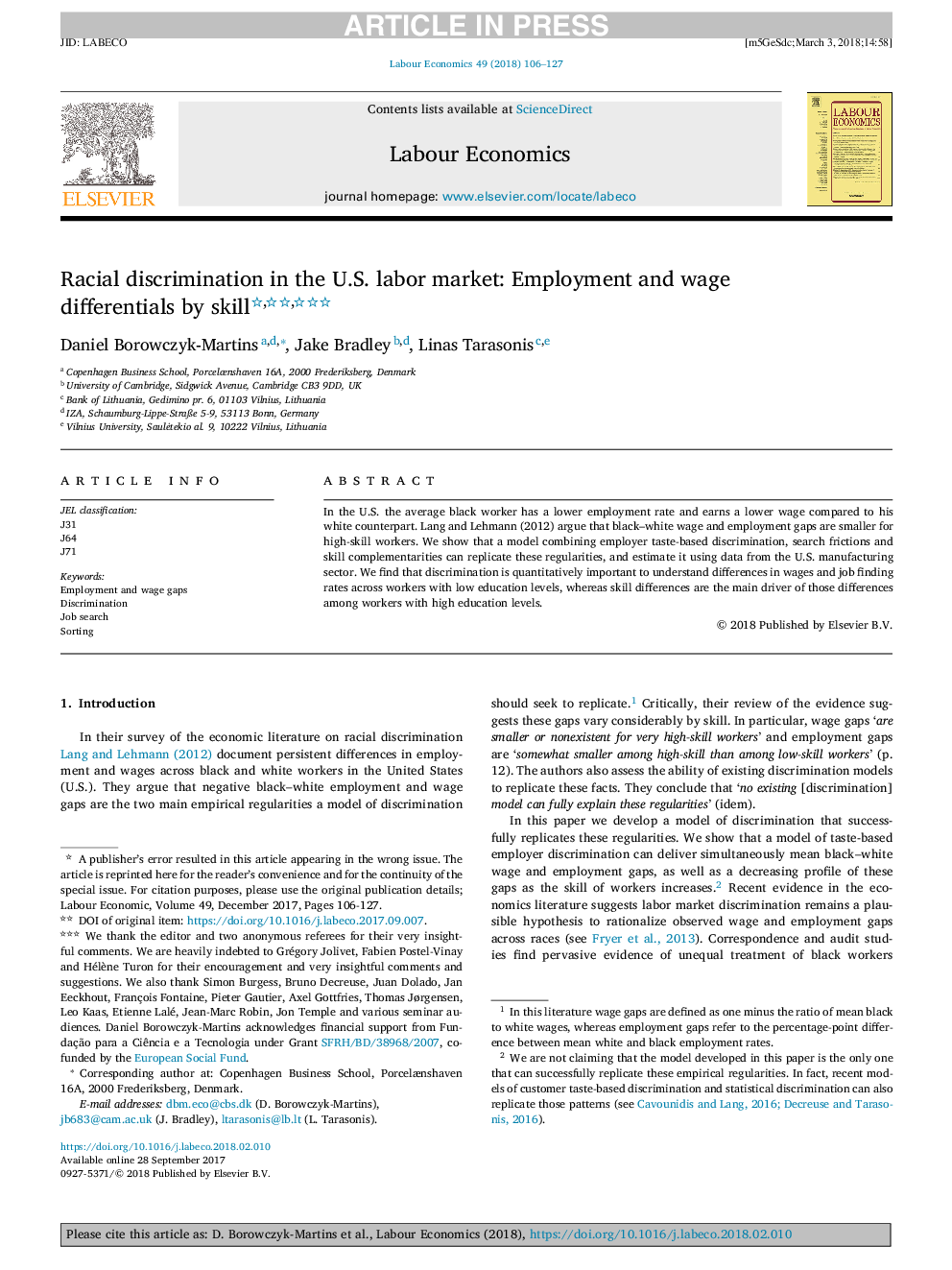| Article ID | Journal | Published Year | Pages | File Type |
|---|---|---|---|---|
| 7371381 | Labour Economics | 2018 | 22 Pages |
Abstract
In the U.S. the average black worker has a lower employment rate and earns a lower wage compared to his white counterpart. Lang and Lehmann (2012) argue that black-white wage and employment gaps are smaller for high-skill workers. We show that a model combining employer taste-based discrimination, search frictions and skill complementarities can replicate these regularities, and estimate it using data from the U.S. manufacturing sector. We find that discrimination is quantitatively important to understand differences in wages and job finding rates across workers with low education levels, whereas skill differences are the main driver of those differences among workers with high education levels.
Related Topics
Social Sciences and Humanities
Economics, Econometrics and Finance
Economics and Econometrics
Authors
Daniel Borowczyk-Martins, Jake Bradley, Linas Tarasonis,
